Building a Better Broccoli
Biofortification With Selenium Improves Nutritional Value, Postharvest Quality
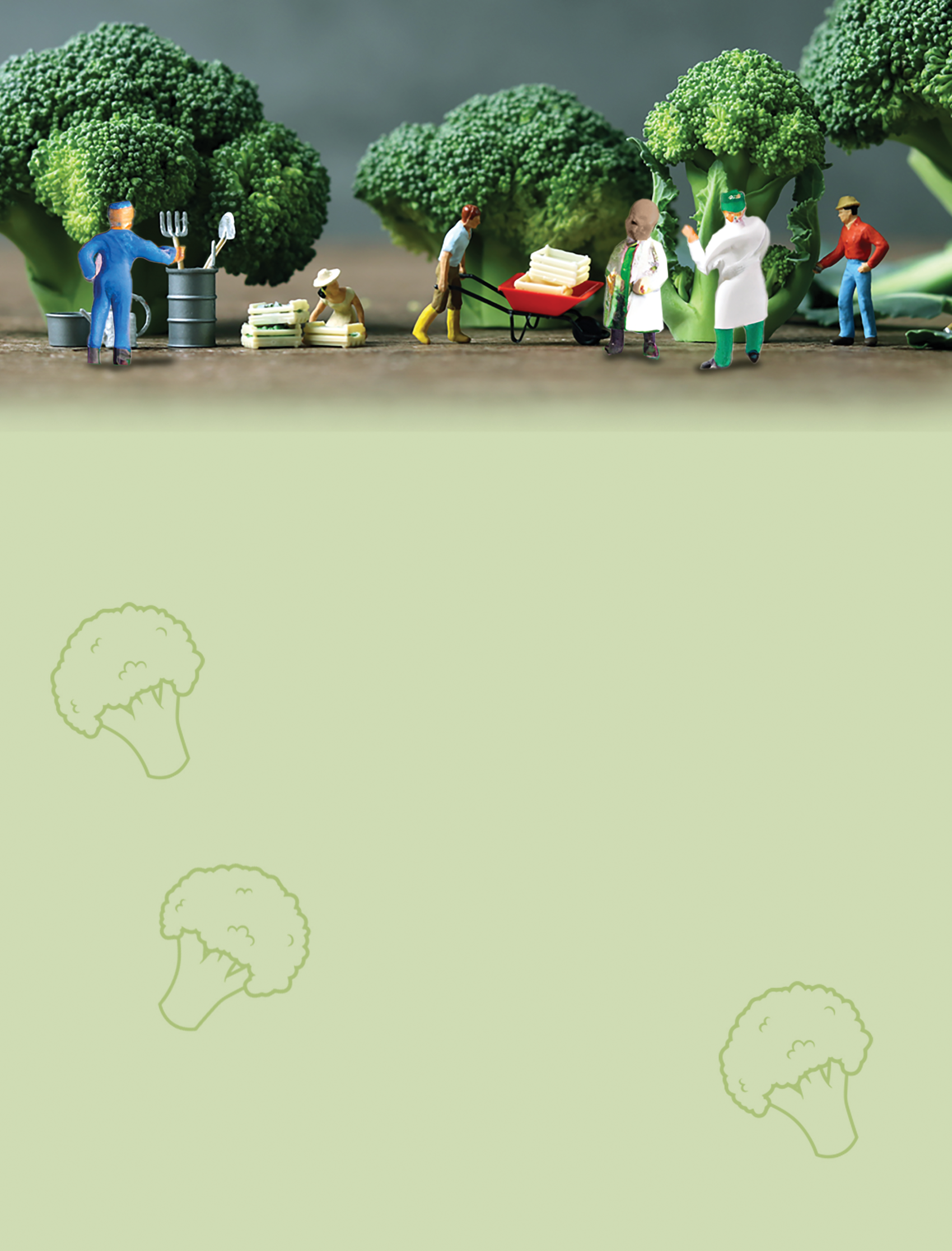
- An estimated 50 to 100 million people across the globe do not receive enough of the element selenium from their diet.
- Selenium deficiency in one’s diet can be associated with condi- tions such as a weakened immune system, heart disease, and increased risk of cancer.
- Broccoli is known as a “selenium accumulator” and tends to take up and store selenium more readily than other crops, making it a good candidate for biofortification.
- New research in Crop Science shows that biofortification of brocco- li with selenium can improve its nutritional value and postharvest quality.

An estimated 50 to 100 million people across the globe do not receive enough of the element selenium from their diet, which can be associated with conditions such as a weakened immune system, heart disease, and increased risk of cancer. Selenium primarily enters the diet through food consumption, and its concentration in a vegetable depends on its level in the soil. Concentrations of the element vary widely in soils across the world with lower levels (<0.05 mg kg–1) in parts of China, Finland, New Zealand, and Argentina and higher levels (>5 mg kg–1) in some regions of the western United States, Canada, France, and Germany. Intensive farming has the potential to deplete selenium soil content even in areas replete with the element.
Through two recent studies in Crop Science, a research group in Argentina has shown that it is possible to improve broccoli nutritional value and its postharvest quality through biofortification with selenium. Rather than a trade‐off between higher selenium content and broccoli quality, the group found both can be increased.
“Several different technologies have been analyzed to improve the production of selenium‐enriched broccoli as an important source of selenium in a healthy human diet,” says Fernando Felipe Muñoz of the Biological Research Institute (IIB) at the National University of Mar del Plata and Faculty of Agricultural Sciences at National University of Litoral (FCA, UNL) who helped lead the research in both studies. “We are not only trying to improve the nutritional quality of broccoli heads to satisfy a need for malnutrition linked to the lack of selenium in the diet, but we also obtained an ‘extra’ benefit by extending the postharvest life of a highly perishable product.”
In a 2021 article (https://doi.org/10.1002/csc2.20630), the group showed that foliar selenium application increased the selenium content of broccoli and did not harm commercial quality; this was followed by a 2022 article (https://doi.org/10.1002/csc2.20904) showing improvement in postharvest commercial quality.
The 2021 experiment analyzed the effect of foliar application of two selenium salts, sodium selenate and sodium selenite, on two broccoli cultivars, Belstar and Legend. They gathered data on growth, photosynthetic parameters, selenium accumulation, and commercial quality of broccoli heads used for fresh market crops grown under field conditions.
“We are not only trying to improve the nutritional quality of broccoli heads to satisfy a need for malnutrition linked to the lack of selenium in the diet, but we also obtained an ‘extra’ benefit by extending the postharvest life of a highly perishable product.”
Increased Selenium Content With No Reduction in Commerical Quality
The researchers studied two selenium salts because crops have different capacities for taking up selenite and selenate. When applied to the foliage, both salts are transported through the plant cuticle and metabolized through the sulfur assimilation pathway, Muñoz explains. To be useable by the plants, selenate must be transformed to selenite by the plants. While their results found some differences between the two selenium salts, both significantly increased the selenium content of the broccoli heads and leaves.
This was true in both cultivars they studied, both of which are grown in Argentina for the fresh market. They found the leaves and heads of both cultivars had significant increases in selenium content, regardless of the selenium salt used and without reducing the commercial quality of the head at harvest time.

“Although we observed particular responses to the different selenium treatments in both cultivars, the global analysis of the results indicates that there would not be a substantial effect of the broccoli cultivar analyzed,” says María Gabriela Guevara, a researcher at the National Scientific and Technological Research Council (CONICET) of Argentina who was part of the study. “Other researchers have evaluated the effect of selenium on other broccoli cultivars, and while the responses to selenium have slightly differed, all concluded that foliar application may be an appropriate method to produce selenium‐enriched broccolis. Similar results have been observed in different cultivars of other crops—lettuce and chicory, for example—and it depends on their genotype.”
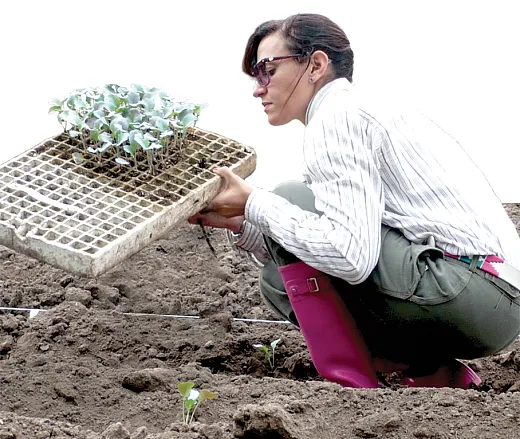
To make sure that the selenium was not detrimental to other qualities of the broccoli, they measured a suite of parameters related to its commercial and nutritional quality, such as plant height, leaf area, photosynthetic rate, chlorophyll content, head fresh weight, and dry matter content.
Fresh weight at harvest time determines the selling weight, so it is critical from a business perspective, while dry matter content is often used to assess the amount of nutrients available. The researchers found that selenium increased the fresh weight and dry weight of the Belstar cultivar and did not impact these qualities of Legend broccoli heads. They also studied the characteristics that impact marketability and economic value of broccoli heads—such as color, diameter, and firmness—finding that the preharvest foliar selenium treatment did not significantly impact any of these qualities and reduce the commercial quality. Lastly, the selenium‐fortified Belstar cultivar experienced a change in transpiration rate, which increased its water use efficiency.
An extremely important component of the scientists’ selenium foliar application was the use of an adjuvant, a mixture of compounds—including organosilicons and fatty acid methyl esters of vegetable oils—that make the entry of the product into the plant leaves more effective and efficient. The adjuvant facilitated the entry of selenium into the broccoli plants and reduced waste, the researchers say, because adjuvants minimize spray drift and help the selenium stick to the water‐repelling broccoli leaves. Due to these findings, the researchers say they highly recommend the use of adjuvants during foliar application in broccoli.
Selenium is not required for plant growth but is seen as a beneficial element for plants with benefits such as enhanced resistance to pathogens, herbivory, salinity, nutrient toxicity or deficiency, and water stress being previously reported. Low doses of selenium can even be applied more as a fertilizer to promote plant growth and increase tolerance to these stresses. To test the benefits of selenium application for broccoli, the researchers performed a follow‐up study in 2022 to establish these “extra” benefits.
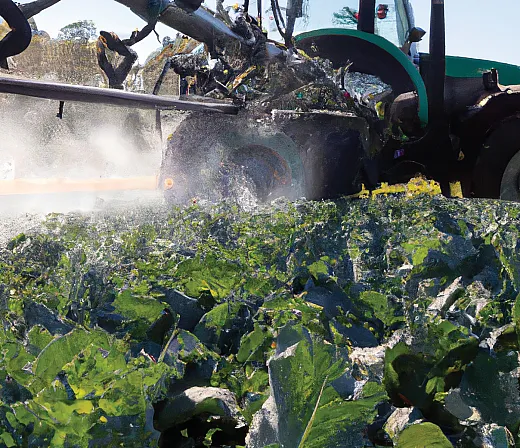
Effect on Shelf Life
The group wanted to discern if the selenium applied before harvest would have an impact after harvest on the commercial shelf life, including commercial and nutritional aspects, of the broccoli heads. Their results indicated that the treatments either did not affect on, and in some cases even improved, the commercial quality of the crop after it was harvested.
Like all crops, broccoli heads begin a series of significant metabolic changes after they are harvested, which increase the process of senescence and lead to a more perishable product. In broccoli, this means they begin to be less vibrant green and start to yellow. They also lose their firmness and nutritional value, all combining to reduce their commercial value.
“Since visual color is a critical factor in retailer and consumer evaluation of product quality and subsequent purchasing decisions, we analyzed whether selenium modifies this parameter during postharvest life of broccoli heads,” explains Lucas Daurelio, an author on this study who is at the Institute of Agricultural Sciences of Litoral (CONICET‐UNL). “The results, obtained with a colorimeter, demonstrated that the foliar treatment with selenium maintained the green color for a longer time than in the control heads. In addition, a delay in the reduction of broccoli heads’ firmness was also observed.”
The senescence is caused by the plant’s production of ethylene gas. The scientists point to previous studies by others that showed selenium‐enriched tomatoes and lettuce had a decrease in the production of ethylene and a slower ripening and senescence as a result. The gas plays a similar role in broccoli, and the researchers found that the selenium‐enriched broccoli, compared with the control, maintained its green color for six days after harvest, when stored at 20°C, which is considered room temperature. In the future, the researchers plan to investigate how the selenium accumulations impact the postharvest ethylene production.
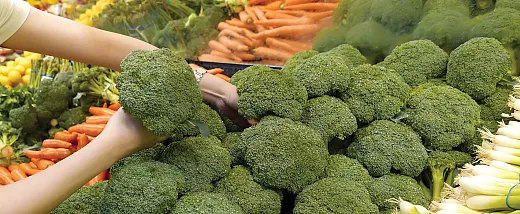
“The storage conditions are fundamental issues that could slow fresh product decay to preserve its commercial value,” Daurelio says. “We compared the effect of selenium on postharvest conservation of broccoli heads under refrigeration and at room temperature. The results obtained with and without refrigeration were similar with improvements in several variables associated with the commercial quality compared with the controls. However, we recommend keeping the heads refrigerated to prolong postharvest life.”
He adds that the nutritional composition of the broccoli heads was maintained or even improved after the selenium treatments, leading the team to conclude that the treatment can not only create selenium‐enriched broccoli, but also contribute to improved quality of the heads during postharvest.
Mark Farnham is a retired public breeder and geneticist who has worked on broccoli for more than 30 years. He says that broccoli is known as a “selenium accumulator” and tends to take up and store selenium more readily than other crops, making it a good candidate for biofortification.
“Many studies have shown particular health benefits of broccoli and selenium,” Farnham says. “It has become a great interest because it could have multiple health‐promoting effects. It’s been found to be associated with reduced cancer risk in mammalian cells.”
Selenium Biofortification: Where and How Much?

Overall, the researchers say that crops that are biofortified with selenium provide a possible source of selenium for humans, and their investigations reached a similar conclusion for broccoli specifically. Based on their work, they can suggest a foliar application selenium of 50 g ha–1. They showed that this amount adequately increases selenium content without changing the commercial quality of the broccoli in a substantial way. The United States National Academy of Sciences’ Panel on Dietary Oxidants and Related Compounds has listed an upper limit for the element at 400 μg per day with a recommended intake of 55 μg per day for men and women.
“In this regard, it can be estimated that, after foliar treatment of 50 g per hectare, an edible portion of broccoli, which is 200 g, contains 60 μg of selenium, which is around the recommended amount of selenium per day,” Muñoz says. “Thus, the production of biofortified broccoli under field conditions with this level of selenium content could be a good source of selenium intake and should not represent a risk of toxicity for human consumption.”
The researchers recommend that selenium biofortification occur only in regions where there is not enough selenium in the soil to help crops meet this nutritional standard. Adding selenium to crops that have enough of the element already has the possibility of leading to toxicity. In addition, communities need to be aware that they are ingesting selenium‐biofortified products to avoid increased risk of selenium toxicity. The researchers say that growers and producers in each climate zone should select the best cultivar that will produce a high field and commercial quality for their area.
Farnham agrees about the complexity of spraying selenium, given concerns about toxicity, and adds he hasn’t seen a huge appetite for selenium‐enriched broccoli in the United States.
“The considerations about toxicity and any regulatory elements haven’t been discussed much in the U.S. although it’s not a country with a high risk of selenium deficiency,” he says. “It’s also important that this work was able to show there is no detrimental effect on broccoli and may even be some benefit. Taken together, this information is useful for anyone getting serious about the foliar application of selenium.”
Considering these results, the researchers in Argentina are beginning to focus on forage crops, such as alfalfa, to obtain selenium‐enriched dairy products.
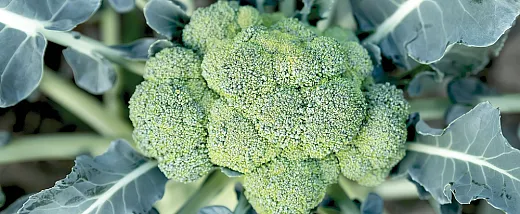
DIG DEEPER
To find out more about the Crop Science research highlighted in this story, please see:
“Improving the Foliar Biofortification of Broccoli With Selenium Without Commercial Quality Losses”: https://doi.org/10.1002/csc2.20630
“Postharvest Commercial Quality Improvement of Broccoli (Brassica oleracea L.) After Foliar Biofortification With Selenium”: https://doi.org/10.1002/csc2.20904
Text © . The authors. CC BY-NC-ND 4.0. Except where otherwise noted, images are subject to copyright. Any reuse without express permission from the copyright owner is prohibited.











